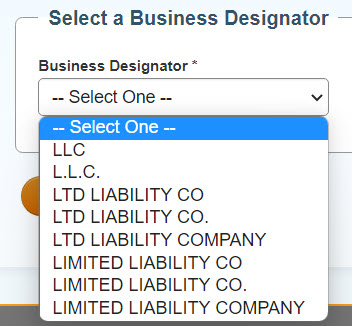
In step 2, we are asked to enter some basic information about the business. These include:
Employer Identification Number – This is optional, but if you already have it, you can enter the EIN of the LLC here. A link is available to the IRS to file for one, however, I would wait until the LLC is filed as should the name not be available, it is a pit of a pain to change it with the IRS. See our guide on filing an LLC EIN.
NAICS Code – This answer is also optional, but is asking for information regarding the business’s activities. To do that, there is a number called NAICS (North American Industrial Classification System). This code is a six-digit number that classifies and categorizes the different businesses. This information is used in reporting statistical data for each of the industries in the U.S. Learn more about how to search for a NAICS number.
Duration – If you intend the business to exist forever, which most businesses do, enter “Perpetual” or leave blank, as all LLCs are set up with a perpetual duration by default. If you have a specific end date in mind (typically used for investment-related businesses), choose a dissolution date.
Effective Date – If you want the LLC to start immediately, leave today’s date in the box. Otherwise, choose a date in the future that you want the LLC to start. The main reason for delaying the LLC start date is when the filer is close to the end of a calendar year, and the business isn’t going to have any activity. By delaying until the following year, they will reduce the number of end-of-year filings.
Source link






